Neighborhood Center Floating Districts
At last Tuesday’s city council meeting, councilors heard the the first reading of  Ordinance No. 1051. The ordinance will amend several sections of the Land Development Code related to Neighborhood Center Floating Districts “Really what it’s intended to do is that these more major intersections allow some level of intensification of development there so whereas maybe only allow a single family home to go there in the current state, maybe a small multi-unit complex could go there. So the idea is the busier those streets are, the larger more collector, the higher the density which is pretty traditional in zoning theory as far as where things can go and fit well with the neighborhood” Martig says the changes are typical in modern zoning theory. It would allow higher density housing, perhaps 4-8 apartments or row housing at certain, pre-determined intersections. Martig says there are many benefits to this approach. “It benefits sustainability, adds housing potentially, is equitable, hopefully these are places too where there is good transportation and people can get around in adding to the tax base.” The Neighborhood Center Floating District Map and the Ordinance itself can be found on the city’s website.
Ordinance No. 1051. The ordinance will amend several sections of the Land Development Code related to Neighborhood Center Floating Districts “Really what it’s intended to do is that these more major intersections allow some level of intensification of development there so whereas maybe only allow a single family home to go there in the current state, maybe a small multi-unit complex could go there. So the idea is the busier those streets are, the larger more collector, the higher the density which is pretty traditional in zoning theory as far as where things can go and fit well with the neighborhood” Martig says the changes are typical in modern zoning theory. It would allow higher density housing, perhaps 4-8 apartments or row housing at certain, pre-determined intersections. Martig says there are many benefits to this approach. “It benefits sustainability, adds housing potentially, is equitable, hopefully these are places too where there is good transportation and people can get around in adding to the tax base.” The Neighborhood Center Floating District Map and the Ordinance itself can be found on the city’s website.
Clean Water Councilors
District 58A representative Kristi Pursell has been appointed to Minnesota’s Clean Water Council, although it will be in a non-voting role. The council was created to advise the Legislature and the Governor on the administration and implementation of the 2006 Clean Water Legacy Act. While running the Cannon River Watershed Partnership, now Clean River Partners, Pursell applied to join the Clean Water Council but was not selected. The council’s primary role is to decide what to do with the Legacy Act funds, which will amount to $315 million this year. “There are these funds and that money; then the council decides where that’s going to go. So from the Clean Water, the council has paid for, if people are familiar with the One Watershed One Plan process that has now resulted in the Cannon River Watershed Joint Powers Board, an organization so the money has from Clean Water Council for some of that water planning for example and other clean water projects.” The Council consists of citizens representing various water based interests, such as agriculture, fishing, environmental, watersheds, and more, with representatives from several state departments joining in. It includes 17 voting members along with 2 representatives from the house and 2 senators. Their concerns include lake, river and stream, groundwater, and Wetland water quality.
Water Council, although it will be in a non-voting role. The council was created to advise the Legislature and the Governor on the administration and implementation of the 2006 Clean Water Legacy Act. While running the Cannon River Watershed Partnership, now Clean River Partners, Pursell applied to join the Clean Water Council but was not selected. The council’s primary role is to decide what to do with the Legacy Act funds, which will amount to $315 million this year. “There are these funds and that money; then the council decides where that’s going to go. So from the Clean Water, the council has paid for, if people are familiar with the One Watershed One Plan process that has now resulted in the Cannon River Watershed Joint Powers Board, an organization so the money has from Clean Water Council for some of that water planning for example and other clean water projects.” The Council consists of citizens representing various water based interests, such as agriculture, fishing, environmental, watersheds, and more, with representatives from several state departments joining in. It includes 17 voting members along with 2 representatives from the house and 2 senators. Their concerns include lake, river and stream, groundwater, and Wetland water quality.

